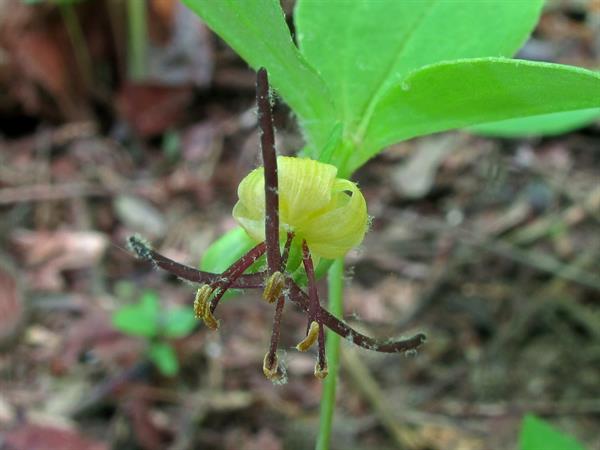
As here interpreted narrowly, the Liliaceae constitutes about 11 genera and 550 species, of the Northern Hemisphere. Subfamilial classification follows Kim & Kim (2018). There has been much investigation and re-interpretation of evidence regarding the upper-level taxonomy of the Liliales, with strong suggestions that the broad Liliaceae recognized by Cronquist (1981) is artificial and polyphyletic. Cronquist (1981) himself concurs, at least to a degree: "we still await a comprehensive reorganization of the lilies into several families more comparable to other recognized families of angiosperms." Dahlgren & Clifford (1982) and Dahlgren, Clifford, & Yeo (1985) synthesized an early phase in the modern revolution of monocot taxonomy. Since then, additional research, especially molecular (Duvall et al. 1993, Chase et al. 1993, Bogler & Simpson 1995, and many others more recently), has strongly validated the general lines (and many details) of Dahlgren's arrangement.
Our “liliaceous” genera (members of orders placed in the Lilianae) are therefore divided as shown below, largely following recent molecular analyses. [Bracketed families] are those not recently treated within the very broad interpretation of Cronquist and others supporting a very broad Liliaceae; all others have been at times in recent decades included in the “Liliaceae”.
ALISMATALES
31. TOFIELDIACEAE: Harperocallis, Pleea, Tofieldia, Triantha.
DIOSCOREALES
44. NARTHECIACEAE: Aletris, Lophiola, Narthecium.
[45. BURMANNIACEAE: Apteria, Burmannia.]
[46. DIOSCOREACEAE: Dioscorea.]
PANDANALES
[49. STEMONACEAE: Croomia.]
LILIALES
53a. TRILLIACEAE: Trillium. (or included in MELANTHIACEAE)
53b. XEROPHYLLACEAE: Xerophyllum. (or included in MELANTHIACEAE)
53c. HELONIADACEAE: Helonias. (or included in MELANTHIACEAE)
53d. CHIONOGRAPHIDACEAE: Chamaelirium. (or included in HELONIADACEAE or further in MELANTHIACEAE)
53e. MELANTHIACEAE: Amianthium, Anticlea, Schoenocaulon, Stenanthium, Melanthium, Veratrum, Toxicoscordion, Zigadenus.
55. ALSTROEMERIACEAE: Alstroemeria.
56. COLCHICACEAE: Colchicum, Uvularia.
59. SMILACACEAE: Smilax.
61. LILIACEAE: Clintonia, Erythronium, Lilium, Medeola, Prosartes, Streptopus, Tulipa.
ASPARAGALES
[62. ORCHIDACEAE: Aplectrum, Arethusa, Aspidogyne, Bletilla, Calopogon, Cleistesiopsis, Corallorhiza, Cyclopogon, Cypripedium, Dactylorhiza, Encyclia, Epidendrum, Epipactis, Eulophia, Galearis, Goodyera, Habenaria, Hexalectris, Isotria, Liparis, Listera, Malaxis, Mesadenus, Oeceoclades, Orthochilus, Platanthera, Pogonia, Ponthieva, Sacoila, Spiranthes, Tipularia, Triphora, Zeuxine.]
67. HYPOXIDACEAE: Hypoxis.
[71. IRIDACEAE: Alophia, Calydorea, Crocus, Crocosmia, Gladiolus, Herbertia, Iris, Nemastylis, Sisyrinchium.]
73c. HEMEROCALLIDACEAE: Hemerocallis. (or included in ASPHODELACEAE [see Applequist 2014)])
74a. ALLIACEAE: Allium, Nothoscordum, Ipheion. (or included in AMARYLLIDACEAE)
74b. AMARYLLIDACEAE: Crinum, Galanthus, Habranthus, Hippeastrum, Hymenocallis, Leucojum, Lycoris, Narcissus, Sternbergia, Zephyranthes.
75a. ASPARAGACEAE: Asparagus.
75b. RUSCACEAE: Aspidistra, Convallaria, Liriope, Maianthemum, Nolina, Ophiopogon, Polygonatum, Sansevieria. (or included in a very broad ASPARAGACEAE)
75c. AGAVACEAE: Agave (including Manfreda), Camassia, Chlorophytum, Hosta, Schoenolirion, Yucca. (or included in a very broad ASPARAGACEAE)
75d. THEMIDACEAE: Dichelostemma. (or included in a very broad ASPARAGACEAE)
75e. HYACINTHACEAE: Hyacinthoides, Hyacinthus, Muscari, Ornithogalum. (or included in a very broad ASPARAGACEAE)
Ref: APG II (2003); APG III (2009); Applequist (2014); Bogler & Simpson (1995); Chase et al. (1993); Chen et al. (2013); Cronquist (1981); Dahlgren & Clifford (1982); Dahlgren, Clifford, & Yeo (1985); Duvall et al. (1993); Kim & Kim (2018); Peruzzi (2016); Tamura In Kubitzki (1998a); Utech (2002a) In Flora of North America Editorial Committee (2002a). Show full citations.
Hover over a shape, letter, icon, or arrow on the map for definition or see the legend. Data for arrows not developed for genera and families which may have species only occurring outside the flora area.
 © Keith Bradley | Lilium catesbyi | Original Image ⭷
© Keith Bradley | Lilium catesbyi | Original Image ⭷ © Alan M. Cressler | Streptopus | Original Image ⭷
© Alan M. Cressler | Streptopus | Original Image ⭷ © Alan Cressler: Medeola virginiana, Mt. Oglethorpe Range, Pickens County, Georgia 1 by Alan Cressler | Medeola virginiana source | Original Image ⭷
© Alan Cressler: Medeola virginiana, Mt. Oglethorpe Range, Pickens County, Georgia 1 by Alan Cressler | Medeola virginiana source | Original Image ⭷ © Bruce A. Sorrie | Medeola | Original Image ⭷
© Bruce A. Sorrie | Medeola | Original Image ⭷ © Gary P. Fleming | Lilium | Original Image ⭷
© Gary P. Fleming | Lilium | Original Image ⭷ © Bruce A. Sorrie | Prosartes | Original Image ⭷
© Bruce A. Sorrie | Prosartes | Original Image ⭷ © Bill Keim, some rights reserved (CC BY), uploaded by Bill Keim | Tricyrtis source | Original Image ⭷ Warning: was NOT research grade.
© Bill Keim, some rights reserved (CC BY), uploaded by Bill Keim | Tricyrtis source | Original Image ⭷ Warning: was NOT research grade. © William D. Leodinh, some rights reserved (CC BY), uploaded by William D. Leodinh | Tulipa source | Original Image ⭷ Warning: was NOT research grade.
© William D. Leodinh, some rights reserved (CC BY), uploaded by William D. Leodinh | Tulipa source | Original Image ⭷ Warning: was NOT research grade.Feedback
See something wrong or missing on about Liliaceae? Let us know here: (Please include your name and email if at all complicated so we can clarify if needed.)
Cite as...